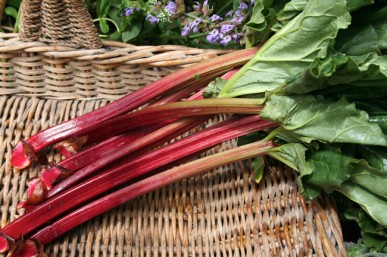
Bright red rhubarb stems
If you are an extra in a movie, providing background audience noise, you are supposed to murmur rhubarb, rhubarb, rhubarb. I don’t know where this idea originated or why rhubarb (why not cabbage, cabbage, cabbage for example!). Sometimes ‘peas and carrots’ are substituted but I do know that in Asterix the crowd always murmurs rhubarb, rhubarb, rhubarb.
Right now in gardens in Southern Australia the rhubarb clumps are thriving and many families are harvesting big bunches of stems and turning them into stewed fruit, crumbles and cakes. I have just found a new rhubarb cake recipe, it came from my sister via her friend’s grandmother and it is delicious (see the end of the article for the recipe). So, although now is not the time to plant rhubarb it is the time to harvest it and eat it. If you don’t have any, check our your neighbours’ gardens and later in the year (late winter) see if they will divide their clump and give you a piece.
Instructions for planting, growing and harvesting follow. Read more
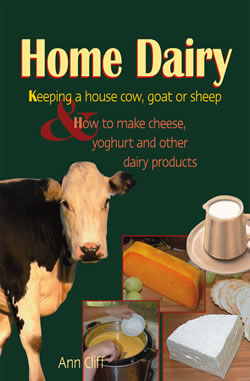 Keeping a house cow, goat or sheep & How to make cheese, yoghurt and other dairy products
Keeping a house cow, goat or sheep & How to make cheese, yoghurt and other dairy products
Ann Cliff
Ann Cliff’s thorough approach to this book is very similar to her earlier one on bees, The Bee Book. She looks at the story of milk, then how to care for dairy animals, and more specifically at cows, goats and sheep. Then the final chapters are on milk, cream, butter and cheese with clear and useful instructions for how to create your own milk based products. I can attest to the joy and heartache of keeping goats and how wonderful it is to have a seemingly endless supply of milk for soft and hard cheeses. Whether you want to embark on the journey of keeping dairy animals or just want to create butter, cheese, yoghurt, kefir, koumiss, ice-cream or soap then this is the book for you. Buy it from an independent bookshop, borrow it from the library or buy a copy online from the store.
Hyland House, 2011, PB, full-colour, 160 pp, $24.95
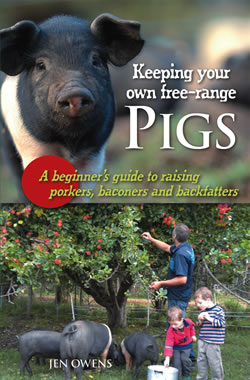 A beginner’s guide to raising porkers, baconers and backfatters
A beginner’s guide to raising porkers, baconers and backfatters
by Jen Owens
ISBN 9781864471175
I have only once kept a pig and for some reason, lost in the mists of time, we named her after my mother-in-law. No insult intended. I was very fond of the pig and my mother-in-law. And that is one of the difficult things about pigs, you do become very fond of them. So when it’s time to kill them it can be difficult. But Jen Owens takes a practical and no-nonsense approach to all aspects of owning and raising pigs, seeing it as more important to take responsibility for the meat she eats and to ensure that the animal it comes from has been respected and cared for during its lifetime. The book has chapters on choosing your pig, housing and fencing, food and water, breeding, health, D-Day (the abattoir and butcher) and porky products.
The perfect book for anyone wanting to raise pigs and eat their own pork and bacon. Buy it from your local bookshop, borrow it from your library or buy a copy online from the store
Sewn PB, full-colour, 144 pp, AUS$24.95
As I’ve mentioned in other posts and articles, for some time now I have been using copper tape to protect seedlings from snail and slug attack. Recently I received an email from a reader saying that he had tried it and it didn’t work. But I knew it worked well in my garden because all my seedlings were surviving even though my garden is still full of snails. But I hadn’t actually put a snail near the tape and watched what happened. So I did. The snail started to head over the copper tape, and then suddenly reared back, twisted around and made its way back down the pot. The theory is that it gives them a small ‘electric’ like shock. I was interested to see that once a snail had ventured onto the tape and received this shock, that they wouldn’t go onto the tape again. I then decided I should film it so that you could all see what happens. So I found some new snails and the rest is on the film. Thanks Dan for help with filming and editing, some bits have been sped up for effect as, well, snails can be a bit sluggish!
Yates Garden Guide 2011
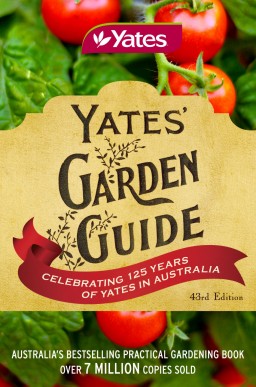 This 43rd edition of the classic Yates Garden Guide is special because it celebrates 125 years of Yates in Australia. I have always loved the clear layout and carefully chosen pictures. It is really easy to find an answer quickly to almost any gardening question. The obvious drawback is that many of the solutions to pest and disease problems are not organic. But Yates are also working to improve their organic profile and they now have (and have had for many years) several allowable organic products. The book has a chapter on the history of the guide, as well as one on organics and no dig gardening. Also soils, composts worms, propagating, gardening for the kitchen and then all the other things you can grow and do in the garden. I love it and refer to it often, but have learnt to ignore the non-organic advice. If you don’t have a recent edition then this would be a lovely one to buy with its links back 125 years. Buy if from your local independent bookshop, or borrow it from your library.
This 43rd edition of the classic Yates Garden Guide is special because it celebrates 125 years of Yates in Australia. I have always loved the clear layout and carefully chosen pictures. It is really easy to find an answer quickly to almost any gardening question. The obvious drawback is that many of the solutions to pest and disease problems are not organic. But Yates are also working to improve their organic profile and they now have (and have had for many years) several allowable organic products. The book has a chapter on the history of the guide, as well as one on organics and no dig gardening. Also soils, composts worms, propagating, gardening for the kitchen and then all the other things you can grow and do in the garden. I love it and refer to it often, but have learnt to ignore the non-organic advice. If you don’t have a recent edition then this would be a lovely one to buy with its links back 125 years. Buy if from your local independent bookshop, or borrow it from your library.
Yates Garden Guide 2011, HarperCollins, 2011, soft cover, 506 pages, $39.95
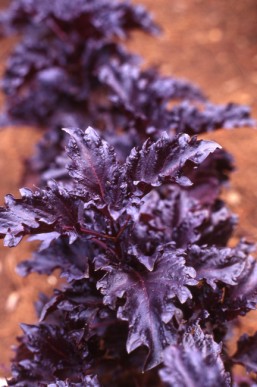
'Purple Ruffles' basil
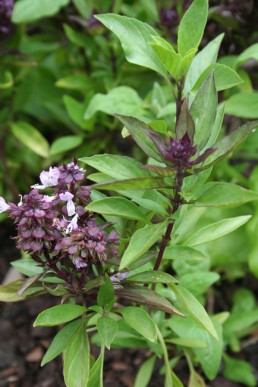
Thai basil
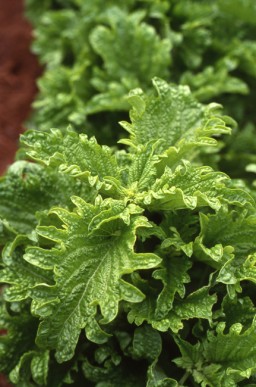
'Green Ruffles' basil
Nothing can compare with the first fresh sprig of basil picked in spring and if you haven’t already planted your basil, now is the time to put it in. It’s hard to believe that such a deliciously aromatic herb could have such a contradictory lineage. Basil is native to tropical and subtropical regions of Asia, Africa and Central and South America, but the main centre of diversity appears to be Africa. It has been cultivated for more than 4000 years. The sixteenth century English herbalist, John Gerard, believed that basil would stimulate the heart and ‘taketh away melancholy and maketh a man merry and glad’ but early Greek and Roman physicians said that it would only grow well if it were planted ‘amid vile shouts and curses’. In the language of flowers, basil means hatred, but it can also signify goodness and love. Read more
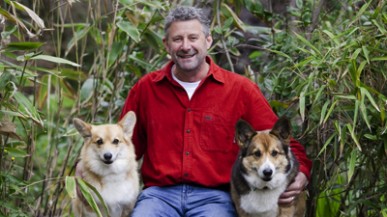
Stephen with his much loved dogs
As many of you will now know, Stephen Ryan, horticulturalist, author and broadcaster is no longer the host of Gardening Australia. It is their loss, but unfortunately ours too. Stephen is a friend, so this is not totally unbiased, but I believe that the ABC has been foolish in the way they have squandered his talents. Stephen has a knowledge of horticulture that is second to none. For more than forty years he has worked in the world of plants, winning awards and scholarships, writing books and speaking on the subject all over Australia and overseas. But instead of tapping into this ‘fountain of all knowledge’, they used him to do awkward connects between segments and to spruik a viewer’s suggestion. Such a wasted opportunity. Gardening Australia has, for so many years, worked to showcase gardening for people of all abilities. I have been gardening, and writing about gardening now a long time, and have often learnt something new from watching Gardening Australia. But not so much recently. I sense that in sacking someone as charismatic and knowledgeable as Stephen Ryan, Gardening Australia is heading down the track of the commercial stations, going for popular at the expense of informed. I guess we will know more about the trend when we see who is appointed to the new position. I hope the appointment won’t be all about style, rather than substance.








